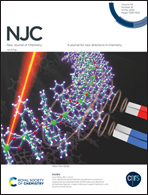Carbon nano-onions from waste oil for application in energy storage devices†
Abstract
As the demand for long-term, sustainable, and durable energy storage devices has been increasing, it is important to develop high performance carbon-based electrode materials for energy storage devices using simple, economical, and green techniques. The present study proposes an environment-friendly approach for facile, large-scale synthesis of onion-like carbon nano-particles (CNOs) for their application in high-performance and durable supercapacitors (SCs). CNOs were synthesized by a traditional wick pyrolysis technique using waste frying oil as the free carbon source. The as-synthesized CNO particles were connected to each other to form a chain-like interconnected network, effectively providing accelerated ion-transport, reduced resistance for electron transport and more active sites for charge storage. SCs based on activated CNOs (a-CNOs) demonstrated a gravimetric capacitance of 71 F g−1 in organic electrolytes at a current density of 2 A g−1. Moreover, a-CNOs delivered good volumetric capacitance of 63 F cm−3 with a high packing density of ∼0.89 g cm−3, which is higher than that of the commercial activated carbon. Furthermore, the capacitance retention was ∼80% even after 10 000 galvanostatic charge discharge cycles. Overall, this work presents a method to produce a new type of carbon-based electrode materials from wastes for high performance energy storage devices.



 Please wait while we load your content...
Please wait while we load your content...